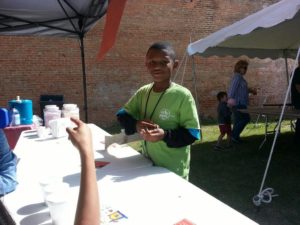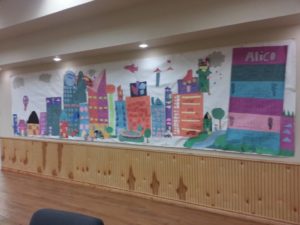With this post we are kicking off the Act Locally Waco mental health blog. We hope to post something once a month or so with a focus on mental health. Stay tuned! — ABT
By Bonnie Goree
Major depression has been a familiar struggle in my adult life. I was just completing junior college when my first episode occurred. I noticed that I could not focus and complete a term paper – my brain felt ‘frozen.’ I had difficulty sleeping and my cognitive skills and mood continuously declined. Another episode occurred in my late thirties, after having major surgery. The surgery was a shock to my system and drastically upset my chemistry, which led my mood to decline again. Between 2006 and 2011, I experienced multiple episodes of major clinical depression, requiring hospitalizations, medicine changes, and Electroconvulsive-Therapy (ECT). My struggle with this disorder reached its peak in 2010, when I had to leave my job of almost twenty years as an Early Intervention Specialist at Heart of Texas Region MHMR. Although I received amazing love and support from my coworkers, at one point I was so depressed that I stayed in bed for 3 days and had thoughts of ending my life. I was feeling so discouraged and hopeless. I had never thought these things would happen to me.
During that difficult time, a friend told me about Mental Health Grace Alliance (MHGA) here in Waco. I met with the founders of this organization and cried throughout most of our visit. But, their support and unconditional acceptance gave me a glimmer of hope that day. I knew all too well the emotional effects of depression. I would sometimes blame them on my difficult childhood or even see them as a spiritual flaw, but it was not until I was connected with MHGA that I really learned about the physical and medical components of this disorder. I had never allowed myself to truly believe that a chemical imbalance could be a major contributor to depression and to other mental health diagnoses. In my experience ECT’s had been more helpful than medicine. Since 2011, however, my psychiatrist has found a combination of two meds that thankfully have worked well. In addition to the medicine, I also became involved in the Living Grace Groups through MHGA. There I met others who had been in the same boat as me and were experiencing hope and recovery.
How did God and my faith fit into my times of hopelessness? I had to wrestle and gradually come to terms with this question. I read in the book of Psalms multiple instances where David described ‘dark, hopeless’ days. I learned that there are many other people in the Bible and in our society that have experienced mental health difficulties. Mother Teresa, for example, wrote in her diaries about her struggles with depression. I also had amazing support from my church family. The bouts of depression have forged some deep, meaningful relationships that continue to this day.
The last part of the story is my favorite. Since 2012, I have been back at Heart of Texas Region MHMR as one of the first three Certified Peer Specialists of the organization. We have had the opportunity to create the job from the ground floor as a new service to adults struggling with mental illness. What an awesome opportunity and privilege I have to offer hope to others! I can relate and say “I’ve been there and done that.”
My journey to regaining life, hope, and healing has been hard but it is happening! It has included multiple vital pieces of the recovery pie: staying connected to supportive people, counseling, medical care, healthy eating, exercise, and giving back to help others. Do I ever have bad days? Yes. There are bumps along the road, but I have tools to get me through those days now. My faith continues to be a place where I find comfort, as I sense God tell me “We will make it through today together. I am holding you and loving you every step of the way.”
In closing, I would like to encourage those in our Waco community who are struggling with mental health difficulties. Know that there is help available: Don’t be afraid to seek it! If we get sick with the flu, we go to the doctor; so why not get help when facing a mental health challenge? Finally, if you have not suffered with mental illness, be assured that you know people who have. I especially urge those in our local congregations to get educated and seek out resources to offer members who are struggling, as I am aware that not everyone shares my experience of finding support in the church. May Waco be a community where mental health topics are not kept a taboo and where everyone can access the needed support for their own journeys of life, hope, and healing.
 This Act Locally Waco blog post was written by Bonnie Goree. Bonnie has lived in Waco for 24 years. She is from Hurst, Texas. She received her B.A. from Howard Payne University in Brownwood, Texas. She loves animals, and has 2 kitties, Mickey and Jerico. She has 2 nephews, 2 nieces and 2 great-nephews. She loves the outdoors, bike riding, music, and spending fun times with friends.
This Act Locally Waco blog post was written by Bonnie Goree. Bonnie has lived in Waco for 24 years. She is from Hurst, Texas. She received her B.A. from Howard Payne University in Brownwood, Texas. She loves animals, and has 2 kitties, Mickey and Jerico. She has 2 nephews, 2 nieces and 2 great-nephews. She loves the outdoors, bike riding, music, and spending fun times with friends.
The Act Locally Waco blog publishes posts with a connection to these aspirations for Waco. If you are interested in writing for the Act Locally Waco Blog, please email [email protected] for more information.
by Kristy O’Brien
Do you know what autism is? Fifteen years ago, even though I had worked at the Texas Youth Commission (TYC) and Brookhaven Youth Ranch in West ISD, I had no idea what autism was! I carried on with counseling sessions at TYC and teaching mathematics at Brookhaven as if the boys were average. I had no knowledge of autism interventions, and in the beginning, I didn’t even realize that a few boys were diagnosed with autism. As my curiosity arose, I began to focus my career on Special Education. I went on to graduate school, and accepted a job with Waco ISD. I started teaching a class then called ‘Autism Unit’ at University High School, which is where I met several students that had many strong capabilities, but in different ways. My students began to teach me how to teach them!
With March being National Intellectual and Developmental Disabilities Awareness Month (NIDDA), and April being Autism Awareness month, I wanted to share some information I’ve learned during my journey working with individuals with autism. Below you will find a few things I’d like everyone to know.
What is Autism?
Autism Spectrum Disorder (ASD) is a form of Intellectual Developmental Disorder (IDD). Autism is a group of complex spectrum disorders of brain development that typically appear during the first three years of life. Research shows that 1 in 68 children have an ASD diagnosis, 1 in 42 boys, and 1 in 189 girls (CDC, 2014). Autism is a lifelong neurological condition that affects each individual differently, in varying degrees of severity. It affects people of all races and socio-economic status. Individuals with autism are often unable to interpret the emotional states of others; they may fail to recognize anger, sorrow, or manipulative intent. Autism impacts the normal development of the brain in the areas of social interaction, communication skills, and sensory integration. Children and adults with autism typically have difficulties in communication, social interactions, and leisure activities.
Strategies for Positive Interactions
Individuals with autism may require different levels of support. It is common for persons on the spectrum to feel easily overwhelmed by interactions and environmental stimuli. As an educator, when I work with children and adults with autism and other IDDs, these are some things I try to keep in mind; these techniques can be applied to everyday life as well.
Use visuals and tactile materials to promote sensory learning
- Avoid long strings of verbal instruction
- Let child use a computer instead of writing
- Protect child from sounds that hurt his/her ears
- Place child near a window and avoid using fluorescent lights
- Don’t ask child to look and listen at the same time
- Use printed words and pictures
- Generalize teaching
- Teach Self-Management
Inclusion Is Important
In addition to the strategies above, I’m always thinking about how I can help students with and without autism have positive interactions with each other. There are several opportunities for students to socialize with peers, both inside and outside the classroom, such as inclusion classes, electives, clubs, choir, and athletics. Yet, inclusive socialization can still be difficult sometimes. In the beginning of my career, it was a challenge getting to know my students with autism. One particular student I had was non-verbal, did not write, nor have any sign language. His name is JD. I learned that he would run out of the classroom. We needed a game plan, quick! I began working with JD on completing assignments, and then we would take a walk or run on the track field. I soon realized that he would be a great athlete for Special Olympics. JD was also able to join the Junior Reserve Officer Training Corps (JROTC) program at University High School, along with several of his peers. He made new friends and learned new skills: how to wear military uniform, do military push-ups, volunteer, and march in cadence at the Waco Veteran’s Day parade and football games. JD loved his JROTC class the best! JD is now 23 years old, volunteers in the community, and participates with Mosaic’s Special Olympics adult team in Waco.
It is essential that all parents create opportunities to talk with their children about respecting and welcoming peers with disabilities. Inclusive efforts such as Special Olympics ‘Meet in the Middle’ program, which allows young people of all ability levels to join together to serve and lead their peers, schools, and communities, are very important as they provide a means for positive exchanges.
Support During Transition to Adulthood is Needed
Transitions can be exciting and scary. Students and families don’t always know what to expect when the school bus stops coming. It is important that schools and community members collaborate to support families as youth with autism and other IDDs transition to adulthood, so that this can be a smooth process.
As individuals with autism and IDD transition into adulthood, it is crucial that they have learned self-management strategies. This allows students to achieve higher levels of independence in the classroom, as well as the community and workplace. Learning to use the public transportation system is one of the many skills individuals on the spectrum have to learn, since most adults with autism and other IDDs do not drive.
Besides learning at school, students can also learn in in the community by shadowing professionals, interning, and/or working. Unfortunately, employers are too often unwilling to hire individuals with disabilities, due to stereotypical beliefs about specific disability labels. However, job coaching and ‘carving’ the students for job skills will better prepare them for employment and for independent living. Providing internship and employment opportunities for individuals with IDD is one way to help. If you would like to employ or have individuals with IDDs volunteer at your business, you can contact local school districts or organizations such as Special Olympics, Mosaic in Waco, Heart of Texas Autism Network (HOTAN), or The Arc of McLennan County.
Waco, what all can we do to help plan a better future for our next generation? I encourage you to play an active part in making ours be a supportive community to those affected by IDDs. There will be many activities going on locally in celebration of Autism Awareness Month and that will be a great way to become more involved. Together we can bridge the gap for every citizen of Waco, including those with IDDs!
 This Act Locally Waco blog post was written by Kristy O’Brien. Kristy is the Secondary Behavioral Specialist for Temple ISD. She attended the University of North Texas and received her Bachelor of Arts in Sociology and Master of Education in Special Education. Kristy is also a graduate of Tarleton State University, with a Master of Education in Educational Administration. Kristy is a board member for Mosaic in Waco, Heart of Texas Autism Network (HOTAN), Special Olympics, and Community Resource Coordination Group (CRCG) of Bell County. She enjoys being involved in the community and looks forward to new adventures in life. She is a volunteer for Mosaic in Waco, as the Special Olympics coach. Kristy has a vision to motivate, inspire, encourage, and teach the children of today! She is a voice for individuals with disabilities, and advocates for creating an equal opportunity to continue every student’s higher education and involvement in the community.
This Act Locally Waco blog post was written by Kristy O’Brien. Kristy is the Secondary Behavioral Specialist for Temple ISD. She attended the University of North Texas and received her Bachelor of Arts in Sociology and Master of Education in Special Education. Kristy is also a graduate of Tarleton State University, with a Master of Education in Educational Administration. Kristy is a board member for Mosaic in Waco, Heart of Texas Autism Network (HOTAN), Special Olympics, and Community Resource Coordination Group (CRCG) of Bell County. She enjoys being involved in the community and looks forward to new adventures in life. She is a volunteer for Mosaic in Waco, as the Special Olympics coach. Kristy has a vision to motivate, inspire, encourage, and teach the children of today! She is a voice for individuals with disabilities, and advocates for creating an equal opportunity to continue every student’s higher education and involvement in the community.
The Act Locally Waco blog publishes posts with a connection to these aspirations for Waco. If you are interested in writing for the Act Locally Waco Blog, please email [email protected] for more information.
By Peaches Henry, Ph.D.
As I watched the historic re-enactment of the Selma marches two weeks ago, my celebration was bittersweet. At a time when we should be celebrating the 50th anniversaries of the victories of the Civil Rights Movement of the 1960s, we are instead watching many of the greatest milestones of the twentieth century erode. While it was deeply moving to honor titans of the Civil Rights Movement of the 1960s such as Representative John Lewis and civil rights strategist Diane Nash, it was deeply disheartening to think of the moves on the state and federal level to turn back the clock. The very law made possible by the sacrifices that occurred on the Edmund Pettis Bridge in 1965 was gutted by the US Supreme Court in 2013. Almost immediately after the Supreme Court ruling, the state of Texas enacted laws with the intent and effect of making voting difficult or impossible for minorities, seniors, and poor people.

The Waco McLennan County NAACP organized a march across the Washington Street bridge in Waco to commemorate the Selma to Montgomery March for Voting Rights in 1965.
As I thought about what I could do as an individual to ensure that our country does not go back to the days when African Americans were not full citizens of this country, the National Association for the Advancement of Colored People (NAACP) was an easy choice for me. The NAACP has been fighting for the rights of all people since its founding in 1909. It was there during the Civil Rights Movement of the 1960s. It provided funding and lawyers for Martin Luther King, Jr. and the leaders during the Selma marches. And the NAACP has never stopped fighting on behalf of African Americans. Since the shooting of unarmed teenager Michael Brown in August 2014, the NAACP has been on the ground in Ferguson, Missouri. The NAACP is in court fighting Texas’s voter identification law.
The Waco NAACP chapter has a nearly eighty-year legacy of working in the Waco-McLennan community. It has been the voice of social justice in this area since its founding in 1936. As president of the Waco NAACP, I am committed to fighting back against those who seek to destroy or diminish the civil rights of any person. The chapter intends to address the economic challenges facing area families including the prevalence of food deserts in the city, lack of good-paying jobs, and lack of good public transportation. We are going to work with local school districts and families in pursuit of academic excellence for our children. We intend to advocate for, support, and provide resources for our families in the community with accountability for all stakeholders to ensure high quality education for all children. In light of the unjustified killing of African-American boys and men in Ferguson, Staten Island, Ohio, and other places, the chapter will focus on racial profiling, legal protection and treatment by police, and police/community relations.
There is a new Civil Rights Movement on the horizon and it’s being led by young people. It was the youth advocates of Ferguson who continued to protest long after the media had lost interest until the Department of Justice’s report vindicated what they had been telling the country. It is the youth all over this country who are learning how to develop and lead successful campaigns to bring about real change in their communities. The Waco NAACP is going to learn from these young people. We are going to sit down with them and let them teach us. Indeed, we are going to follow them and let them lead us.
Justice is not a black, white, or brown issue. Justice is a moral issue. Protecting the civil rights of all people is a moral decision. It should be a fight that all people who believe in doing right should be prepared to undertake. The NAACP was founded by a multi-cultural group of individuals of different races, ethnicities, religions, ages, and socio-economic backgrounds. We invite everyone who believes in justice for all to join the NAACP in this ongoing struggle.
Come join the oldest and largest civil rights organization in the nation in the fight for justice. We meet on the fourth Monday of each month at 6:30PM at the Texas Ranger Hall of Fame Education Center. Contact the Waco NAACP at [email protected].
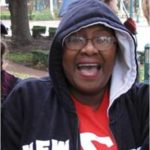 This Act Locally Waco blog post was written by Dr. Peaches Henry. Dr. Henry is a graduate of the University of Texas. She received both her master’s and doctorate in English from Columbia University in New York. She is an English Professor at McLennan County Community College. She is the current president of the Waco McLennan County branch of the NAACP.
This Act Locally Waco blog post was written by Dr. Peaches Henry. Dr. Henry is a graduate of the University of Texas. She received both her master’s and doctorate in English from Columbia University in New York. She is an English Professor at McLennan County Community College. She is the current president of the Waco McLennan County branch of the NAACP.
The Act Locally Waco blog publishes posts with a connection to these aspirations for Waco. If you are interested in writing for the Act Locally Waco Blog, please email [email protected] for more information.
March is National Intellectual and Developmental Disabilities Awareness Month (NIDDA). This Act Locally Waco blog post is one of a series which will be posted Tuesdays throughout the month of March to raise awareness and build understanding about some of the issues, challenges and possibilities associated with Intellectual and Developmental Disabilities. – ABT
By Serina Cole
I have lived in small towns most of my life. It comforts me to know everyone on my block. I like that I went to school with most of my sons’ teachers. I know by name and reputation every elected official in my town. I call them by first name and in most cases, I call them my friends. You may not have the whole town round for dinner once a week, but when there is a crisis – like a fire on a farm or somebody losing their dog – you will be amazed at how the community rallies together. I’ve seen our town shut down for football games and for funerals. This is community to me even though t’s not perfect by any means. I’m not sure if a perfect community exists, but I love this description of one: An inclusive community is open and accessible for all. In this community, each member is able to take an active part and is safe and empowered. In an inclusive community, citizens’ voices are heard and their contributions are acknowledged and valued by their neighbors. In an inclusive community, every person is respected as a citizen who can fully exercise her or her rights and responsibilities. It is a community where each member brings unique strengths, resources, abilities and capabilities. WOW! Is there such a place? Because I want to live there!
I borrowed this description from the American Association of Intellectual Developmental Disabilities’ (AIDD) journal. The title of the journal is Inclusion and it reports on the inclusion of individuals with intellectual developmental disabilities and their place in society. The concepts of integration and community based services for individuals with I/DD have influenced public policy, in turn affecting public practice. Phrases such as “least restrictive environment” and “mainstreaming” emerged as part of landmark right-to-education legislation. More and more we see inclusion taking place in our community, but inclusion is more than just placing people in neighborhoods, schools, family homes, places of worship, regular recreational activities, and so forth. It is about supporting people to become connected and to be a part of the place or activity.
In my time as an advocate for the I/DD community, I’ve encountered many types of people. For the most part, the message I share has been embraced and the support has been astounding. But, there are always the skeptics, those who don’t agree with my way of thinking. Even after the patient explanations, careful arguments, foot stomping disputes and frustrated tears, there are people who just don’t agree that this special needs population has a place outside of the state school or institution. It was only a few months after I started with Mosaic as the Community Relations Manager that we had to fight to save a woman’s life when her doctor didn’t place enough value on it to save her. We won that battle and were able to persuade her family to agree to a minor operation that saved her life. But, we lost the war because the doctor remained unmoved and resolved in his belief that she wasn’t worth the effort. Do you question the value of people with intellectual disabilities? What possible contribution can they make to your community? It’s ok if you do, I understand! Honestly, I would have the same questions had I not grown up with my brother with special needs.
I have the pleasure of working with a young man named Johnathon. He receives services from Mosaic, a HCS (Home and Community Based Services) provider in Waco that provides support to individuals with I/DD. Johnathon is also an advocate for the I/DD population. He shares his story with others hoping he can change perceptions and open people’s minds to the endless possibilities his life holds. I want to share part of his message with you now:
My name is Johnathon. I live in a Mosaic Group home and work part-time in the Mosaic office. I stayed with my mom until I got into trouble. The police picked me up from my house and I went to jail. I had to go to the courthouse to see the judge. She told me instead of going to prison, she would give me 10 years of probation and let me move into a Mosaic group home. While I was on probation, I had a baby girl. She is 9 years old today.
Mosaic helped me stay out of trouble. The talked to me and helped me get the therapy I need to make me a better person. I learned right from wrong. I’m no longer on probation and am free to live my life without restrictions. I do things I enjoy. I like to stay busy and work hard. One day I want to help people. I want to go to college. I have big dreams for myself. I know anything is possible if I try hard enough. I am a dad, a volunteer, an employee, a student, a champion, an artist, and a friend. I am proud of the man I am today!
Johnathon is an inspiration. How many of us can say we are all these things! While he may not understand his purpose, Johnathon knows his value. His story offers only a glimpse of what can be possible when the right supports are in place. He has so many aspirations for his life because he’s been given permission to dream! As I kid I had a poster that read, “Before the reality comes the dream.” We have to start somewhere.
What will it take to realize this vision of an ‘inclusive community’? There must be a shift in focus in viewing people with disabilities according to their deficiencies and limitations to focusing on their strengths and capacities. People need opportunities to share their gifts and strengths. Both in our professional and personal lives, we must promote and practice the values of acceptance and hospitality for all people. If we don’t, how can we expect it of others? Hospitality is not a heroic virtue, but a commonplace part of everyday life. We must all be active participants in making our communities welcoming places for all. Join with me in these efforts.
 This Act Locally Waco blog post was written by Serina Cole. Serina lives in Cameron, Texas, but commutes over 120 miles a day to fulfill her passion to serve individuals with intellectual developmental disabilities. She has worked as the Community Relations Manager for Mosaic in Waco, to create opportunities for individuals with I/DD to pursue a meaningful life in a caring community, giving a voice to their needs. Serina is very involved in the I/DD community as a volunteer, educator and advocate. She volunteers as the Delegation Coordinator and coach for Mosaic’s Special Olympics team and serves as the Secretary for the Waco Mayor’s Committee for People with Disabilities. She is a recent graduate of Waco’s Leadership Plenty Institute, Class of 2014-2015. She states she has fallen in love with the Waco Community and how the city embraces the opportunity to serve, love, protect and care for those in need.
This Act Locally Waco blog post was written by Serina Cole. Serina lives in Cameron, Texas, but commutes over 120 miles a day to fulfill her passion to serve individuals with intellectual developmental disabilities. She has worked as the Community Relations Manager for Mosaic in Waco, to create opportunities for individuals with I/DD to pursue a meaningful life in a caring community, giving a voice to their needs. Serina is very involved in the I/DD community as a volunteer, educator and advocate. She volunteers as the Delegation Coordinator and coach for Mosaic’s Special Olympics team and serves as the Secretary for the Waco Mayor’s Committee for People with Disabilities. She is a recent graduate of Waco’s Leadership Plenty Institute, Class of 2014-2015. She states she has fallen in love with the Waco Community and how the city embraces the opportunity to serve, love, protect and care for those in need.
The Act Locally Waco blog publishes posts with a connection to these aspirations for Waco. If you are interested in writing for the Act Locally Waco Blog, please email [email protected] for more information.
By Veta L. Reed, President of Waco Alumnae Chapter of Delta Sigma Theta Sorority, Inc.
“Faith is the first factor in a life devoted to service. Without it, nothing is possible. With it, nothing is impossible.”—Mary McLeod Bethune
This must have been the motto that motivated the twenty-two dynamic founders of Delta Sigma Theta Sorority, Inc. Our sorority is an organization of college educated women committed to public service with a primary focus on the black community. It is the goal of the Waco Alumnae Chapter to provide assistance and support in our local community. Educational development, one of our Five Point Programmatic Thrusts, is a focal point of our chapter. We have long been a Partner in Education to South Waco Elementary School. Just last week, we awarded a student at the school a $25 first place award for her essay entitled, “Why Education is Important to Me.” The purpose was two-fold: to encourage thoughts about the importance of going to school and learning, and to stress the importance of creative writing. Three to four times during the school year, Waco Alumnae presents every pre-k to first grade student at South Waco Elementary with a book to build their home library, this is especially for economically disadvantaged students who may not have many books at home. The purpose is to stress the importance of reading and the joy books can bring to students.
Studies have shown that the color red stirs anger in students, so Waco Alumnae sponsored a Red Shirt Exchange in which students brought their red shirts to school in exchange for more subtle colored shirts provided by our chapter. We have provided school uniforms for South Waco Elementary to have on hand in the event of an accident or in case parents could not provide uniforms for their child.
As Waco Alumnae we do not limit our community service to just the students. We provide encouragement to the teachers and staff as well by providing treats in the teachers’ lounge and ‘Krash Kits’ for each teacher containing toiletries, snacks, water, etc. Just last fall, Waco Alumnae was recognized by the Waco School Board as an outstanding Partner in Education! We are committed to public service through educational development and will continue to be for, as Albert Einstein said, “Only a life lived in the service to others is worth living.”
 This Act Locally Waco blog post was written by Veta Reed. Veta is a 40-year member of Delta Sigma Theta Sorority, Inc., and has been a member of the Waco Alumnae Chapter since 1976. She has been the president of the chapter since July, 2014. In her professional life, she is a speech therapist having worked 32 years with the Waco ISD. She retired in 2007 from the district and continues to work as a contract speech therapist when needed. In her leisure time, Mrs. Reed enjoys sewing, reading, and spending time with her family. She is the wife of Charles E. Reed, former Vice President of Student Services at TSTC, who also retired in 2007. She is the mother of two sons—Donovan, the controller for Anheuser-Busch InBev in Houston and Ryan, staff accountant for Lorena ISD.
This Act Locally Waco blog post was written by Veta Reed. Veta is a 40-year member of Delta Sigma Theta Sorority, Inc., and has been a member of the Waco Alumnae Chapter since 1976. She has been the president of the chapter since July, 2014. In her professional life, she is a speech therapist having worked 32 years with the Waco ISD. She retired in 2007 from the district and continues to work as a contract speech therapist when needed. In her leisure time, Mrs. Reed enjoys sewing, reading, and spending time with her family. She is the wife of Charles E. Reed, former Vice President of Student Services at TSTC, who also retired in 2007. She is the mother of two sons—Donovan, the controller for Anheuser-Busch InBev in Houston and Ryan, staff accountant for Lorena ISD.
The Act Locally Waco blog publishes posts with a connection to these aspirations for Waco. If you are interested in writing for the Act Locally Waco Blog, please email [email protected] for more information.
by Jenuine Poetess
 Since 2011, East Waco has partnered with NeighborWorks Waco to host an annual block party complete with music, visual art exhibit, artisan booths, and food vendors known as, Art on Elm. This celebration of community and creative expression was born out of a question of how to rekindle the sparks from a once-thriving area of Waco’s Downtown. Consultants were brought in to evaluate the neighborhood, its history, and the needs of the community. Out of those conversations and brainstorms, Art on Elm was born.
Since 2011, East Waco has partnered with NeighborWorks Waco to host an annual block party complete with music, visual art exhibit, artisan booths, and food vendors known as, Art on Elm. This celebration of community and creative expression was born out of a question of how to rekindle the sparks from a once-thriving area of Waco’s Downtown. Consultants were brought in to evaluate the neighborhood, its history, and the needs of the community. Out of those conversations and brainstorms, Art on Elm was born.
Art on Elm features an exhibit of visual arts submitted by artists across many disciplines who are living and creating in Waco. On an outdoor stage musicians from around Central Texas set the tone for community celebration as the street, closed to vehicle traffic, fills with neighbors dancing, laughing, and singing together. The aroma of fresh food cooking wafts across the blocks from local food vendors creating a feast for all senses! (The last day to submit artwork, musical feature, food or artisan vendor is TODAY, March 11, 2015! Click here for details).
A key component of Art on Elm is empowering youth. You people get involved both as volunteers…and as artists. This event is an opportunity for neighbors from all across McLennan county, Central Texas, and even out-of-state to gather, celebrate the talent and value of creative expression and to be reminded of what rich resources Wacoans have to offer one another.
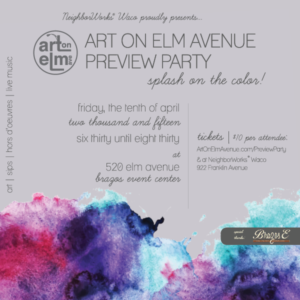 This year’s event will be held on Saturday April 11, 2015 from 10am-3pm. The event is FREE and open to the public of all ages. You will want to bring cash for food and art purchases. If you’re interested in a sneak peek at the art exhibit, join Art On Elm on Friday April 10th for the Splash of Color Preview Party. Click here for ticket information.
This year’s event will be held on Saturday April 11, 2015 from 10am-3pm. The event is FREE and open to the public of all ages. You will want to bring cash for food and art purchases. If you’re interested in a sneak peek at the art exhibit, join Art On Elm on Friday April 10th for the Splash of Color Preview Party. Click here for ticket information.
Get Involved in Art on Elm!
- Calling volunteers of all ages for Art On Elm! Jobs could include children’s activities, directing traffic, handing out flyers, working in the exhibition or helping with music. If you would like more information about being a volunteer please contact us at [email protected].
- Call for submissions (visual arts, vendors, musicians) ends TODAY MARCH 11, 2015!! Click here for guidelines to submit.
- Come to the event on April 11, 2015 and bring your friends, family, and neighbors!
Upcoming Arts & Culture Events:
 Waco Poets Society’s Nuestra Voz/Our Voice hosts an Abilities & Mental Health Awareness and Solidarity Open Mic on Saturday March 14, 2015 at 7pm at the Art Forum of Waco (1826 Morrow Ave). This event is FREE ($3 suggested donation) and open to people of all ages, abilities, genres, languages, styles, identities, and cultures.
Waco Poets Society’s Nuestra Voz/Our Voice hosts an Abilities & Mental Health Awareness and Solidarity Open Mic on Saturday March 14, 2015 at 7pm at the Art Forum of Waco (1826 Morrow Ave). This event is FREE ($3 suggested donation) and open to people of all ages, abilities, genres, languages, styles, identities, and cultures.- Waco Poets Society will host a Pop-up Writing Circle before open mic on the 14th, beginning at 6pm at the Art Forum. Prompt, paper, and pens will be available—come ready to write and discuss! This is a casual, affirming, collaborative, creative space.
- In the Words of Womyn weekly writing circle continues on Mondays from 6-7:30pm at the Art Forum of Waco—open to all who live as and identify as womyn. This space is for the practice, discussion, and exploration of the written & spoken-word arts. All genre writers welcome!
- BIRDS Exhibit will begin accepting submissions of art works across any discipline on March 27, 2015 for exhibit at the Art Forum of Waco from April 25th through June 13th. All ages, all media welcome! For more information please click here.
 Waco McLennan Library is holding a Writing & Art Contest for young artists ages 5-17. Deadline March 20, 2015. Please click here for full submission guidelines. (every hero)
Waco McLennan Library is holding a Writing & Art Contest for young artists ages 5-17. Deadline March 20, 2015. Please click here for full submission guidelines. (every hero)
Have an arts and/or cultural event you’d like to share with the community or a project we should know about? Please contact Jenuine Poetess at [email protected].
(Photo credits: All photos courtesy of NeighborWorks Waco, used with permission)
 Jenuine Poetess is an artist, visionary, and community organizer. In 2010, she founded In the Words of Womyn (ITWOW), an international, grass-roots, written and spoken-word arts project with chapters throughout Los Angeles; Waco, TX; and Lebanon. ITWOW empowers womyn of all ages to give sound to our story and volume to our voice.HOT~ITWOW writing circle meets Mondays from 6-7:45pm at the Art Forum of Waco beginning February 2, 2015. Jenuine also founded Waco Poets Society which sponsors a local open mic venue in Sanger Heights. Meeting every 2nd & 4th Saturday at the Art Forum of Waco Nuestra Voz Open Mic invites community to share poems, songs, stories, spoken-word, and other creative expressions! In 2015, Jenuine along with a number of other artists creating and residing in Waco, co-founded the Central Texas Artist Collective (click link to learn more and get involved). You can contact her at: [email protected].
Jenuine Poetess is an artist, visionary, and community organizer. In 2010, she founded In the Words of Womyn (ITWOW), an international, grass-roots, written and spoken-word arts project with chapters throughout Los Angeles; Waco, TX; and Lebanon. ITWOW empowers womyn of all ages to give sound to our story and volume to our voice.HOT~ITWOW writing circle meets Mondays from 6-7:45pm at the Art Forum of Waco beginning February 2, 2015. Jenuine also founded Waco Poets Society which sponsors a local open mic venue in Sanger Heights. Meeting every 2nd & 4th Saturday at the Art Forum of Waco Nuestra Voz Open Mic invites community to share poems, songs, stories, spoken-word, and other creative expressions! In 2015, Jenuine along with a number of other artists creating and residing in Waco, co-founded the Central Texas Artist Collective (click link to learn more and get involved). You can contact her at: [email protected].
March is National Intellectual and Developmental Disabilities Awareness Month (NIDDA). This Act Locally Waco blog post is one of a series which will be posted Tuesdays throughout the month of March to raise awareness and build understanding about some of the issues, challenges and possibilities associated with Intellectual and Developmental Disabilities.
by Serina Cole
Sometimes I catch myself thinking back to my school days and wonder, “Whatever happened to Joe Smith or Cheryl Maddison?” I’m sure I am not alone. I wonder about the quiet boy in the back of the room, the school bully, the classroom sweetheart – where are they now? Typically, a quick Facebook search will satisfy my curiosity easily enough and all is well.
When you stroll down memory lane, do you ever think about the ‘special’ kids? You know the ones who attended the Special Ed classes because they different from the rest of us. While we are making our way through college, marriage, parenthood and just life in general, it’s not very often these kids cross our minds. Why should they?
I can tell you the story of one sweet red headed boy with certainty. Jimmy has Cerebral Palsy and has been bullied most of his life, not only by his class mates but by his siblings and family members as well. They didn’t understand his disability. Out of fear they avoided him on the playground, dunked his head in the toilet, they called him names and made him feel worthless. It’s a sad story and unfortunately so very common. Jimmy had a Grandpa who refused to let his grandson become a victim to his disability. There wasn’t a battle he didn’t fight and lose when it came to his grandchild. Every time the child was told, “no, sorry you can’t” – his grandfather was behind him, “Yes Jimmy, you can!”
Fast forward 20 years… After graduating from Texas Lutheran University, James Littleton received a full academic scholarship to Emory University where he received a Master of Divinity. He now serves as the Associate Pastor of a church with over 3,000 in his congregation. He has married and plans to start a family. He is passionate about helping others to realize their full potential and value. He is no longer the young victim in the corner crying. He is the hand reaching out to kids like him embracing them with love and compassion. When the world is telling them, No, you can’t, he is shouting back, YES! We Can. This story is about my brother and my hero. His story has a happy ending, but how many others do not?
Each year we celebrate March as National Intellectual and Developmental Disabilities Awareness Month (NIDDA). We want to utilize this time to bring awareness and promote the inclusion of individuals with intellectual disabilities in our community. People with intellectual developmental disabilities (I/DD) experience significant limitations in 2 main areas 1) intellectual functioning and 2) adaptive behavior. These disabilities were once referred to as mental retardation. The R-word is outdated and since the passage of Rosa’s Law in 2010, has been replaced in many states with “intellectual disability.” Special Olympics, Best Buddies and supporters across the world have inspired respect and raised consciousness about the R-word in their campaign, Spread the Word to End the Word. They maintain that respectful and inclusive language is essential to the movement for the dignity and humanity of people with intellectual disabilities.
I like to use the phrase out of sight, out of mind when it comes to society’s easy dismissal of issues they don’t feel affect them directly. Why should we worry about what happens to those kids in the special education classes? Here are some basic truths: WISD allocates over 8 million dollars a year for providing special education programs to more than 1,600 students (10.6% of the student population). There are more than 50,000 individuals with intellectual developmental disabilities receiving services in the state of Texas at the cost of $145,000 per person each year. This is a significant investment! Every day I talk to parents and family members living with loved ones with intellectual disabilities. One parent put things into perspective when she told me, “I just don’t want my son to be a burden on society.” This is a concern for parents and should be a concern for our community. We must change the perception that I/DD is a burden and embrace the talents and abilities of these individuals as contributions to our community.
It was President Ronald Reagan who declared March to be Developmental Disabilities Awareness Month in 1987, urging “all Americans to join me in according to our fellow citizens with such disabilities both encouragement and the opportunities they need to lead productive lives and to achieve their full potential.” Today people with I/DD are living and working in the community, pursuing a higher education, falling in love and living life to the fullest. Collectively we can build a welcoming community through education and outreach. It is my hope you will join in celebrating the lives of those living with intellectual developmental disabilities.
 This Act Locally Waco blog post was written by Serina Cole. Serina lives in Cameron, Texas, but commutes over 120 miles a day to fulfill her passion to serve individuals with intellectual developmental disabilities. She has worked as the Community Relations Manager for Mosaic in Waco, to create opportunities for individuals with I/DD to pursue a meaningful life in a caring community, giving a voice to their needs. Serina is very involved in the I/DD community as a volunteer, educator and advocate. She volunteers as the Delegation Coordinator and coach for Mosaic’s Special Olympics team and serves as the Secretary for the Waco Mayor’s Committee for People with Disabilities. She is a recent graduate of Waco’s Leadership Plenty Institute, Class of 2014-2015. She states she has fallen in love with the Waco Community and how the city embraces the opportunity to serve, love, protect and care for those in need.
This Act Locally Waco blog post was written by Serina Cole. Serina lives in Cameron, Texas, but commutes over 120 miles a day to fulfill her passion to serve individuals with intellectual developmental disabilities. She has worked as the Community Relations Manager for Mosaic in Waco, to create opportunities for individuals with I/DD to pursue a meaningful life in a caring community, giving a voice to their needs. Serina is very involved in the I/DD community as a volunteer, educator and advocate. She volunteers as the Delegation Coordinator and coach for Mosaic’s Special Olympics team and serves as the Secretary for the Waco Mayor’s Committee for People with Disabilities. She is a recent graduate of Waco’s Leadership Plenty Institute, Class of 2014-2015. She states she has fallen in love with the Waco Community and how the city embraces the opportunity to serve, love, protect and care for those in need.
The Act Locally Waco blog publishes posts with a connection to these aspirations for Waco. If you are interested in writing for the Act Locally Waco Blog, please email [email protected] for more information.
by James Gooden
As it is written: “Feed a man and he will eat for only one day; teach him how to fish and he will eat for a life time.” Sometimes I think of this familiar expression when I am considering the importance of Neighborhood Associations…
Why is it important to have a Neighborhood Association? In today’s times our communities face many social struggles. In response to these struggles — we have to learn to water our own grass. Every community has a duty to show development and to improve the quality of existence. The only way that can occur is to become a part of city government. Neighborhood Associations are a way to participate in city government. The Neighborhood Association gives you a voice in the development of your living space, better known as your community.
Neighborhood Associations are organized for a reason — to show unity among the residents of the community, and to make sure the needs of the community are addressed. Imagine you have identified a need in your community… there are a series of steps that you can take to insure that you are heard and that your specific need is addressed by the city government. The Neighborhood Association can make this happen, but you have to participate.
For example, it’s kind of like when you send someone to the store and say “Bring me something back.” When that individual arrives back you may find yourself saying, “That’s not what I wanted.” That same principal applies with community development. The only difference is – if you don’t participate in community development, you just might not get anything back at all. As individuals in the community we know better than anyone what our specific needs and wants are for the areas in which we live. Who represents you better than anyone? YOURSELF! If your thoughts and concerns for your community are not expressed, then how can you expect someone to know what your needs are? They won’t! Consider also that the thoughts and wishes that you have for your community may be shared by others.
Here’s another familiar expression: “Everyone wants to go to the party but, no one wants to dance!” Sometimes you have to step out of your comfort zone to let someone know that you are willing to be part of the solution and not part of the problem. When you look around and see all the other parts of the city developing and growing by leaps and bounds, and your community is stuck and being held down, then it’s time to take action and do something about it. Stop watching progress and development pass you by; it’s time to water our own grass! The key to having a beautiful lawn and making sure that the grass is green and grows properly, is the fertilizer we use. In this case, your active role in the growth and development of your community is the fertilizer that’s needed. Don’t sit around and wait for something to happen, get involved and make it happen! Remember: if you pay taxes, you don’t work for the city government; the city government works for you. Make a pledge not only to the community but, to yourself: get involved and have an active voice in the things that happen in the community in which you and your family live.
In closing, I would like to say, unless it is organized, a neighborhood is incapable of looking after its interests and dealing with basic American political and economic institutions. By banding together, residents can overcome these handicaps. No neighborhood can match the lobbying budget of a major company, but a neighborhood organization can have influence by making a positive use of the many residents within its community. By organizing, neighborhoods can transform the perceptions of the people who own resources from seeing a neighborhood as a liability to seeing it as an asset.
The grass is not always greener on the other side. That’s why it is very important to… what?
WATER YOUR OWN GRASS!!!
 This Act Locally Waco blog post was written by James Gooden. Born and raised in Waco, Texas, James spent the past 20 plus years in Tulsa, Oklahoma. He has returned home to Waco to care for his elderly mother. While in Oklahoma, he was the Director of Field Services for Advanced Home Health Care Services. James attended Texas Southern University in Houston, Texas, and is a graduate of University Center of Tulsa. During his stay in Tulsa, James worked with several volunteer organizations including The Tulsa Boys Home, Light House for the Blind, and reading to preschool kids during story time. At the present time he spends his time working with the community and looks forward to his next adventure in life. James, attributes his love for volunteering to his parents: his father, the late James W. Gooden, and his mother, Ethel Gooden, who is still fighting for community causes. James is a graduate of The Leadership Plenty Institute, class of 2014-2015. He is Co-chair for the Education/Presentation task group of Citizens for Responsible Lending and is involved in a host of other community interests.
This Act Locally Waco blog post was written by James Gooden. Born and raised in Waco, Texas, James spent the past 20 plus years in Tulsa, Oklahoma. He has returned home to Waco to care for his elderly mother. While in Oklahoma, he was the Director of Field Services for Advanced Home Health Care Services. James attended Texas Southern University in Houston, Texas, and is a graduate of University Center of Tulsa. During his stay in Tulsa, James worked with several volunteer organizations including The Tulsa Boys Home, Light House for the Blind, and reading to preschool kids during story time. At the present time he spends his time working with the community and looks forward to his next adventure in life. James, attributes his love for volunteering to his parents: his father, the late James W. Gooden, and his mother, Ethel Gooden, who is still fighting for community causes. James is a graduate of The Leadership Plenty Institute, class of 2014-2015. He is Co-chair for the Education/Presentation task group of Citizens for Responsible Lending and is involved in a host of other community interests.
he Act Locally Waco blog publishes posts with a connection to these aspirations for Waco. If you are interested in writing for the Act Locally Waco Blog, please email [email protected] for more information.
By Crystal Hernandez
Hi. It’s nice to meet you. We’re the YMCA of Central Texas.
Many folks in Waco have never been formally introduced to the YMCA of Central Texas. First impressions or chatter among friends often portray the Y as just another gym, a place to don spandex, pound out a mile or two on the treadmill, knock out a couple of reps on the weights or swim a few laps.
When you join the Y, though, you belong to more than a gym although we do have a great gym. When you join the Y, you join a community. We’re a gym with a mission — a mission to put Christian principles into practice through programs that build healthy spirit, mind and body for all. Our mission governs all we do. Here’s how.
We are for you. We are for your neighbor. We are for your child. We are for the healthy and those struggling to reclaim their health. We are for those that love spandex and those who hate it. We are for everyone. At the Y, a supportive community and friendships are a big part of wellness. At every age and every activity level, you’ll find people just like you looking to live a bit healthier.
If an expansive cardio and weight area are what you’re looking for, we have it. Between our two branches (Doris Miller Family YMCA and Waco Family YMCA) we offer more than 100 land-based group exercise classes each week. If you’re more of a water baby, we offer group exercise classes in our pools, too. (By the way, we have five pools). From Zumba® to yoga, from Insanity® to Aquatic Boot Camp, we have a class for everyone.
We don’t stop there, though. We believe that everyone is entitled to better health, and we want to help. Here are some examples of some of our special programming that helps build up the health of our community:
- LIVESTRONG® at the YMCA, a free 12-week program, helps adult cancer survivors reclaim their total health and find a community of support.
- Our children’s health is important, too. Kids ages 7-13 who are above their healthy body can enroll, along with their caregivers, in MEND (Mind, Exercise, Nutrition, Do it!). The dynamic and engaging curriculum of this free 10-week program guides kids toward healthier eating and a more active lifestyle.
- The safe, low-impact exercises of Enhance®Fitness improve endurance, strength, balance and flexibility among those with arthritis.
- The YMCA’s Diabetes Prevention Program is a 12-month lifestyle behavior intervention that is part of the CDC-led National Diabetes Prevention Program. It helps those at high risk of developing type 2 diabetes adopt and maintain healthy lifestyles by eating healthier, increasing physical activity and losing a modest amount of weight to reduce their chances of developing the disease.
Our friendly, knowledgeable staff members are guided by our core values of caring, honesty, respect and responsibility. We’re here to do more than help you reach your goals; we’re here to build a relationship with you. If you’re a gym rat, we’ll cheer you on! If you’re new to the fitness world, we’ll take time to get to know you while guiding you in achieving your goals.
And do you want to know one of the most amazing things about the Y? It’s for everyone! The generosity of others is at the core of our existence. It is only through the support of our volunteers and public and private donors that we are able to give back to the communities we serve. We offer financial assistance so that cost is not a barrier to anyone wanting better health. The Y is for community. The Y is for you. You should get to know us. We’d like to get to know you.
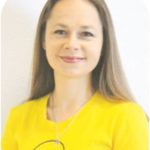 This Act Locally Waco blog post was written by Crystal Hernandez. Crystal is the Healthy Living Director for the Waco Family YMCA. She received her degree in Exercise Science and Health Promotion from the University of Memphis. She’s blessed to be the mother of 3 beautiful children, Norah, Robbie and Sammie and she and husband, Shawn will be adding number 4 to the mix in less than a month. In her free time, she loves hitting the pavement and pounding out a good run.
This Act Locally Waco blog post was written by Crystal Hernandez. Crystal is the Healthy Living Director for the Waco Family YMCA. She received her degree in Exercise Science and Health Promotion from the University of Memphis. She’s blessed to be the mother of 3 beautiful children, Norah, Robbie and Sammie and she and husband, Shawn will be adding number 4 to the mix in less than a month. In her free time, she loves hitting the pavement and pounding out a good run.
The Act Locally Waco blog publishes posts with a connection to these aspirations for Waco. If you are interested in writing for the Act Locally Waco Blog, please email [email protected] for more information.
By Minister Sandra Henry, Book Club Administrator, Pleasant Olive Missionary Baptist Church
As I searched for the words to write this article, the question that I continued to ask myself was, “What is so important about reading?” I took a walk into my past and stopped by my childhood.
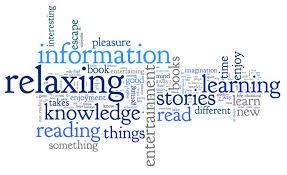 I was born and raised in New York City. Yes, I am very proud of it! New York is a fascinating multicultural city and a child with a vivid imagination can experience many adventures. I have always loved school, books, and the gift of knowledge that they give to everyone who will accept the offer as well as the challenge. As a child, I wanted to travel to faraway places, and reading helped me to imagine I was right there. I liked reading adventure stories like, The Adventures of Tom Sawyer and the Adventures of Huckleberry Finn written by Mark Twain.
I was born and raised in New York City. Yes, I am very proud of it! New York is a fascinating multicultural city and a child with a vivid imagination can experience many adventures. I have always loved school, books, and the gift of knowledge that they give to everyone who will accept the offer as well as the challenge. As a child, I wanted to travel to faraway places, and reading helped me to imagine I was right there. I liked reading adventure stories like, The Adventures of Tom Sawyer and the Adventures of Huckleberry Finn written by Mark Twain.
I have found the most fascinating stories, truth, and adventures to be written in God’s inspired word, the Holy Bible. As we read about the Creation in the book of Genesis, we learn how our universe came into existence. The story of Creation teaches us the value of life and that we are each worth something special. It also teaches us to work with integrity and to rest to enjoy life.
We also learn in the book of Genesis the story of Noah and the Ark. It teaches us to take care of innocent animals and to preserve wildlife. When we look into the sky and see a beautiful rainbow after it has rained, we know it is God’s promise to mankind that He will take care of us and love us always.
As a mother, I encouraged my child to read by reading to him when he was young. Reading became a part of our daily routine, and he was eager for me to read to him before bedtime.
I became involved in book club through Ryn Farmer, a coordinator at the Waco Community Development Corporation (Waco CDC), and through my church, Pleasant Olive Missionary Baptist Church. Ryn met with our Pastor, Dr. Willie E. Clarke, and later our congregation. She shared with us the importance of book clubs and the poor statistics in reading of our children. She touched the hearts of the people in our congregation, including me, and book club was born in our church. Our pastor is now deceased but his vision of book club is still alive in our church.
I became a part of book club because I wanted to encourage children in our community to find the adventures and interests in reading that I did as a child. Reading is a way for each child to reach his or her true potential in their lives. I wanted to be a small part of giving a child every chance to fulfill their dreams.
Reading builds character in children who will one day become adults. It develops empathy in our children toward other people because it allows them to imagine or relate to what others experience.
Reading is so much better than watching TV because reading stimulates the brain, allows us to relax, builds and stores knowledge, improves language skills and vocabulary, and develops a child’s imagination.
How can anyone live in our society and function to their true potential if they do not know how to read? Everything we do has some form of reading attached to it. Yet, there are many people in America who do not know how to read. I find that sad. A country of this magnitude should not have this kind of problem.
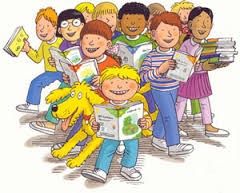 Book clubs are so important to the future of our children. Book clubs encourage and challenge our children to take every opportunity to develop their education and build their character. Book clubs help motivate children to meet their highest potentials.
Book clubs are so important to the future of our children. Book clubs encourage and challenge our children to take every opportunity to develop their education and build their character. Book clubs help motivate children to meet their highest potentials.
Reading empowers our children with the confidence to stretch beyond their limits and to strive to reach their greatest achievements and expectations in their lives.
How about some food for thought…
“A child needs both to be hugged and unhugged. The hug lets her know she is valuable. The unhug lets her know that she is viable. If you’re always shoving your child away, they will cling to you for love. If you’re always holding them closer, they will cling to you for fear.” — Polly Berrien Berends
“For I know the thoughts that I think toward you, says the Lord, thoughts of peace and not of evil, to give you a future and a hope (JEREMIAH 29:11 NKJV).”
“Train up a child in the way he should go, and when he is old he will not depart from it (PROVERBS 22:6 NKJV).”
Reading is forever! Give a child the gift of reading!
 This Act Locally Waco blog post was written by Minister Sandra Henry. Min. Henry serves as an associate minister at Pleasant Olive Missionary Baptist Church in Waco, Texas. She has served at Pleasant Olive for over twenty years. She and her church developed the Book Club and Mentorship Program at J. H. Hines Elementary School with the help of Ryn Farmer, Waco Community Development Center Coordinator in the last school year of 2013-2014. Min Henry preached her first sermon at the New American International Baptist Institute and Seminary in Harker Heights, Texas in December 2012 and received her license in March 2013 at Pleasant Olive. She received her Master of Theology and Doctor of Theology at NAIBI Seminary. She is an honorably discharged veteran from the United States Army with four years of active service. Min Henry and her husband, Joseph Henry, relocated to Waco, Texas in 1985 after he retired from the United States Army with 20 years of service. Min Henry is retired from Department of Veterans Affairs Regional Office with twenty-four years of service. They have four children, five grandchildren and two great grandchildren. Bro and Min Joseph Henry love the Lord and they serve Him together. Min Henry’s focus is a faithful and humble servant rooted in the word of God.
This Act Locally Waco blog post was written by Minister Sandra Henry. Min. Henry serves as an associate minister at Pleasant Olive Missionary Baptist Church in Waco, Texas. She has served at Pleasant Olive for over twenty years. She and her church developed the Book Club and Mentorship Program at J. H. Hines Elementary School with the help of Ryn Farmer, Waco Community Development Center Coordinator in the last school year of 2013-2014. Min Henry preached her first sermon at the New American International Baptist Institute and Seminary in Harker Heights, Texas in December 2012 and received her license in March 2013 at Pleasant Olive. She received her Master of Theology and Doctor of Theology at NAIBI Seminary. She is an honorably discharged veteran from the United States Army with four years of active service. Min Henry and her husband, Joseph Henry, relocated to Waco, Texas in 1985 after he retired from the United States Army with 20 years of service. Min Henry is retired from Department of Veterans Affairs Regional Office with twenty-four years of service. They have four children, five grandchildren and two great grandchildren. Bro and Min Joseph Henry love the Lord and they serve Him together. Min Henry’s focus is a faithful and humble servant rooted in the word of God.
The Act Locally Waco blog publishes posts with a connection to these aspirations for Waco. If you are interested in writing for the Act Locally Waco Blog, please email [email protected] for more information.

